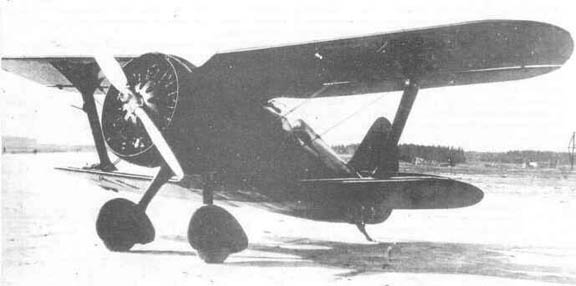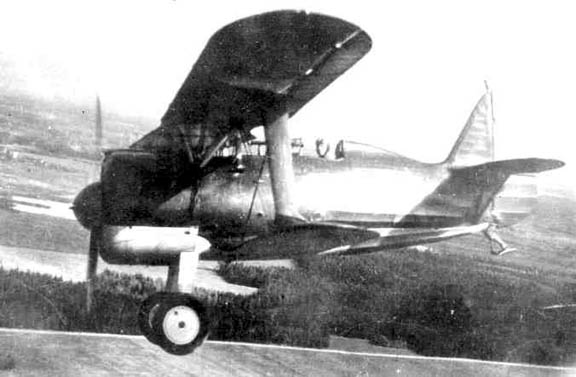|
|



|
Type: Single seat fighter Origin: Polikarpov Model: I-15 Crew: One First Flight: October 1933 Service Delivery: N/A Final Delivery: N/A Number Produced: – I-15: 647 – I-15bis: 2,408 Powerplant: M-22 Model: M-22 (licensed Bristol Jupiter) Type: 9-cylinder naturally aspirated air-cooled Number: One Horsepower: 473 Dimensions: Length: 6.10 m (20 ft 0 in) Wingspan: 9.75 m (32 ft 0 in) Height: 2.20 m (7 ft 3 in) Wing area: 21.9 m² (236 ft²)
Weights: |
Performance: Maximum speed: 350 km/h (220 mph) Range: 500 km (310 miles) Service ceiling: 7,250 m (23,800 ft) Rate of climb: 7.6 m/s (1,490 ft/min) Wing loading: 65 kg/m² (13 lb/ft²) Power/mass: 0.25 kW/kg (0.15 hp/lb) Armament: Four 7.62 mm PV-1 machine guns – or – Two 12.7 mm BS machine guns
Drop Ordnance: |
|
Design and development - Source: Wikipedia The design for the 14th fighter for the VVS, the I-14, started as an advanced (for the era) monoplane under the direction of Andrei Tupolev. He grew concerned that the design would not mature, and orded up two backup biplane designs as the I-14A and B just to be safe. Polikarpov had just been released from prison in August 1932, and was handed the I-14A project. When both the I-14 and I-14A were ordered into production, Polikarpov's design became the famous I-15. The first flight was made in October 1933 with V.P. Chkalov at the controls. I-15, also known by its development name TsKB-3, a small biplane fighter with a gulled upper wing. It was a development of the I-5 fighter. It was equipped with one 700 PS (515 kW) M-25 engine. Total 674 were built.
Operational history - Source: Wikipedia
 I-15bis (I-152).
TsKB-3bis - Prototype. TsKB-3ter - Prototype fitted with the more powerful M-25V radial piston engine. I-15 - First production series. I-15bis (I-152) - Single-seat fighter biplane, armed with four 7.62-mm (0.30-inch)PV-1 or ShKAS machine-guns, plus up to 150 kg (330 lb) of bombs. The I-15bis was powered by the more powerful 570 kW (775 PS) M-25V radial piston engine. It had a straight upper wing. 2,408 machines were built. I-152GK - One aircraft fitted with a pressure cabin. I-152TK - One aircraft fitted with two turbochargers.
I-15ter (I-153) - Development of the I-15 with retractable landing gear. |

